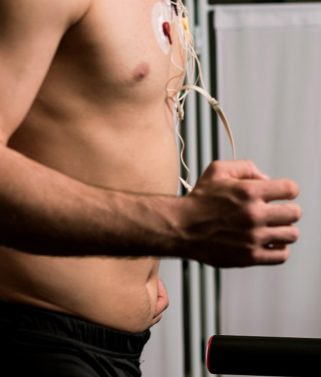
Professional Cyclist Taylor Warren Shares His Thoughts on Training with Humon
Taylor Warren is a professional cyclist with the Boulder based 303 Project. He is also working as a USAC level 2 coach. Taylor has been training with Humon for the past 6 months and here is what he has to say about how Humon is helping him hit new PR’s.
When it comes to training, I’ve been using the aid of technology for quite a long time. The first fitness tool I acquired was a heart rate monitor. I had no clue how to train, but seeing how high I could push my heart rate was fun and rewarding. I quickly developed a sense of the internal workings of my body, how my heart rate would respond to different intensities and how other variables affected it. As I progressed through ranks of racing, I found it harder and harder to use heart rate alone and this led me to acquiring a power meter so I could also measure my efforts in watts. Again, the learning curve was steep, but the more I used power, the more I learned about my physical capabilities. Now, in my first season as a professional racer, I’ve added a new tool to my arsenal, a Humon Hex.
The Humon Hex is part of a new fleet of wearable devices and what it does is measure hemoglobin percentage and hemoglobin concentration within the muscle. This is a very cool concept and up until just recently this kind of data was only retrievable in a lab setting. Now I have three devices that can help me paint a full picture of what is happening at the physiological level in real time. If heart rate is a snapshot of an internal effort and power is a snapshot of external output, using muscle oxygen concentration can be described as a localized snapshot of how the heart rate and power is affecting the muscle. This takes a lot of the guess work out of determining training zones when using the Humon Hex.
Using the Humon, you can break up the data into three training zones:
Zone 1 can be described as a regeneration zone, or an indication that there is an abundance of oxygen in the muscle; theoretically, this shows that you are recovering. Zone 2 can be described as a steady state zone, where you are still performing work aerobically and the muscle is taking in oxygen as it is being delivered, at a steady rate. The third zone that can be assessed with the Humon is the point where the muscle is starting to go from an aerobic state to an anaerobic state and where the effort level is unsustainable. Finding the transition between zones 2 and 3 can pinpoint where your lactate threshold occurs, which is really cool because this is also a metric that used to be only attainable in the lab. Additionally, these zones are completely personalized to the athletes and can change every day based on the physiological state of the body.
When training and racing, there are three limiters that hold you back from being a superhuman athlete. The three limiters are respiratory exchange, or how efficient you are at transferring oxygen from the lungs, to the blood stream and into the muscle. The second is cardiovascular capacity, or how much blood volume your heart can pump per beat (i.e. how strong your heart is). The last limiter is muscular strength — how much workload your muscle fibers can handle before fatiguing. Using the Humon can help you start to pin point your greatest limiter. If you see that muscle oxygen saturation is very high, 70–80% but your fatiguing very quickly then most likely respiratory exchange is not a limiter and it is most likely your muscular endurance. On the contrary, if oxygen saturation dips very low, respiration may be your limiter. Learning about what is holding you back and then using training techniques to boost that physiologic department may be the key to breaking through a fitness plateau.
The data Humon provides could be the next step into breaking all your pr’s. Personally, I have found it very useful when working on my lactate threshold and trying to nail down power at my anaerobic limit. Using for shorter anaerobic efforts has been pretty beneficial as well due to the fact that I can tell when I’m recovered enough to jump back into the next effort. I’ll continue to use the hex and keep collecting data, as it’s similar to a power meter where it is hard to get the whole picture until you have used it for a season and can see peaks and valleys. Look for my next post where I’ll delve more into the specifics of using the Hex and how it can be incorporated into a structured training plan.

